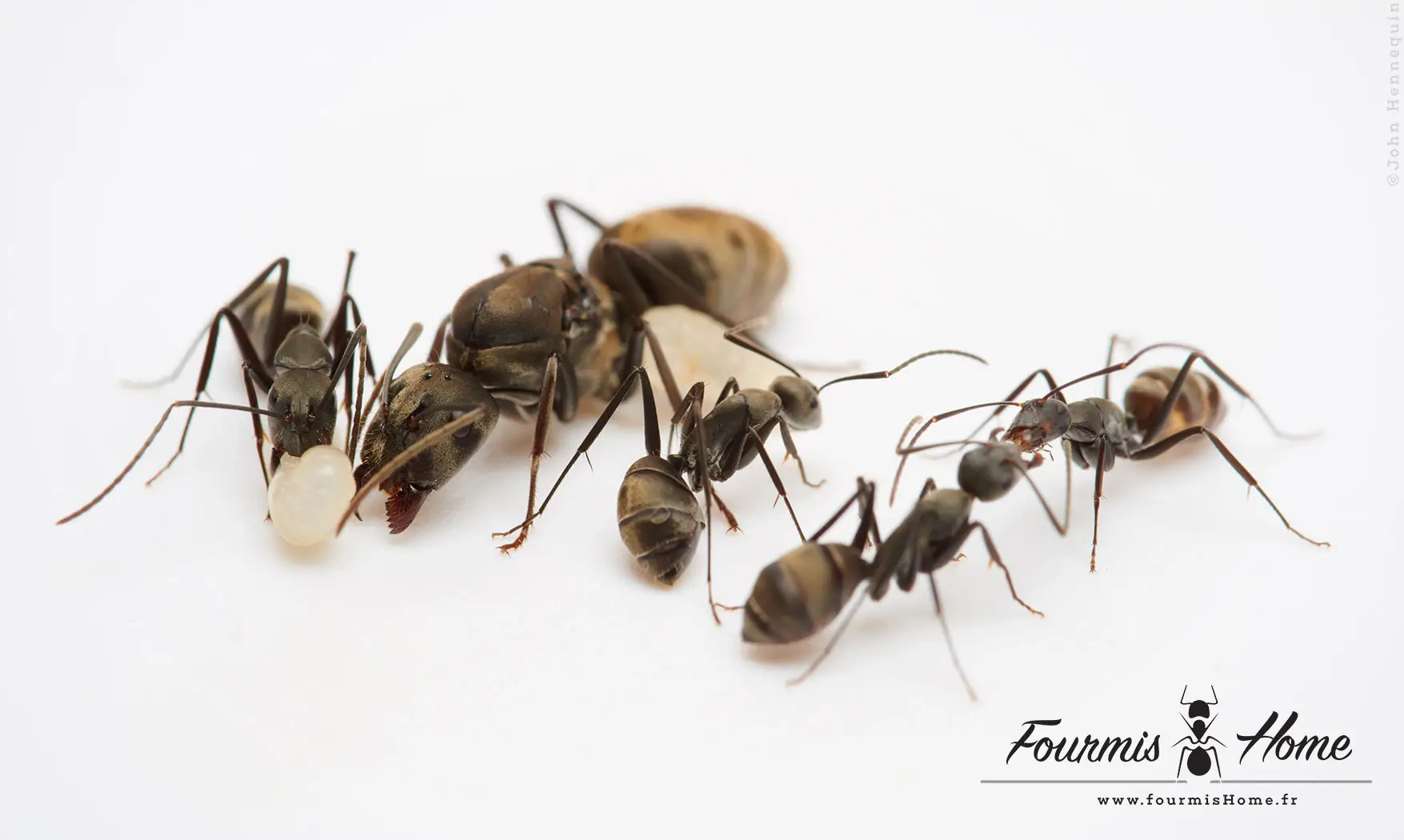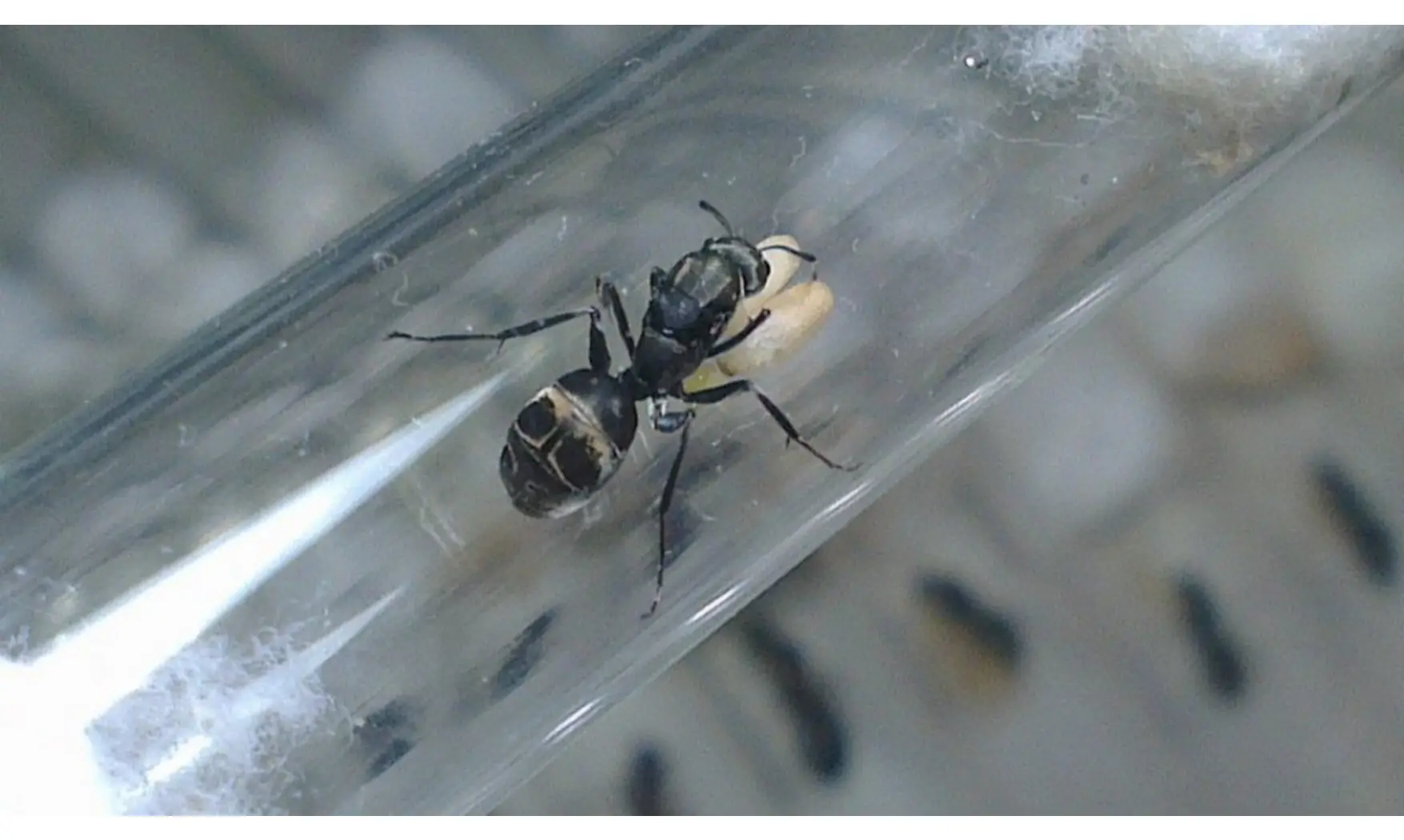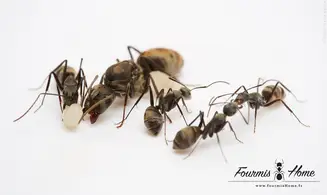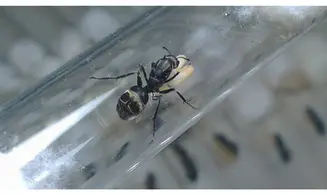



Camponotus parius
Reference : CFOUR-070
49.90€
Available
Latin name: Camponotus parius
Taxonomy: Subfamily: Formicinae Tribe: Camponotini
Breeding level: Intermediate: imposes higher demands on temperatures.
Geographical distribution: India, Southeast Asia
Habitat: Rainforest
Colony form: Monogyne
Queen: Size: 14-15mm Color: black with reflections on the gastre, strong thorax
Workers: Size: 5 - 8mm Color: black with silvery reflection on the gaster, polymorph
Major: Size: 10 -12mm
Male: Size: 10 Color: Black
Food: Honeydew and insects: Flies, mealworms, mosquitoes, small crickets, fruits
Humidity: Hunting area: 50 - 70 Nest: 50 - 70%
Temperature: Hunting area: 21 - 35 ° C Nest: 24-28 ° C
Hibernation: none but a winter break of 3 months at room temperature is recommended.
Description: This species native to the regions of India and South-East Asia is really simple breeding provided to meet the conditions of maintenance. The workers are very active and show a high activity in the hunting area with a big aggressiveness once the colony populates.
Development: Swarming at the beginning of the rainy season
Foundation: cloistral (without food)
Size of the colony: several thousand individuals and queen who can live 20 years.
Taxonomy: Subfamily: Formicinae Tribe: Camponotini
Breeding level: Intermediate: imposes higher demands on temperatures.
Geographical distribution: India, Southeast Asia
Habitat: Rainforest
Colony form: Monogyne
Queen: Size: 14-15mm Color: black with reflections on the gastre, strong thorax
Workers: Size: 5 - 8mm Color: black with silvery reflection on the gaster, polymorph
Major: Size: 10 -12mm
Male: Size: 10 Color: Black
Food: Honeydew and insects: Flies, mealworms, mosquitoes, small crickets, fruits
Humidity: Hunting area: 50 - 70 Nest: 50 - 70%
Temperature: Hunting area: 21 - 35 ° C Nest: 24-28 ° C
Hibernation: none but a winter break of 3 months at room temperature is recommended.
Description: This species native to the regions of India and South-East Asia is really simple breeding provided to meet the conditions of maintenance. The workers are very active and show a high activity in the hunting area with a big aggressiveness once the colony populates.
Development: Swarming at the beginning of the rainy season
Foundation: cloistral (without food)
Size of the colony: several thousand individuals and queen who can live 20 years.

